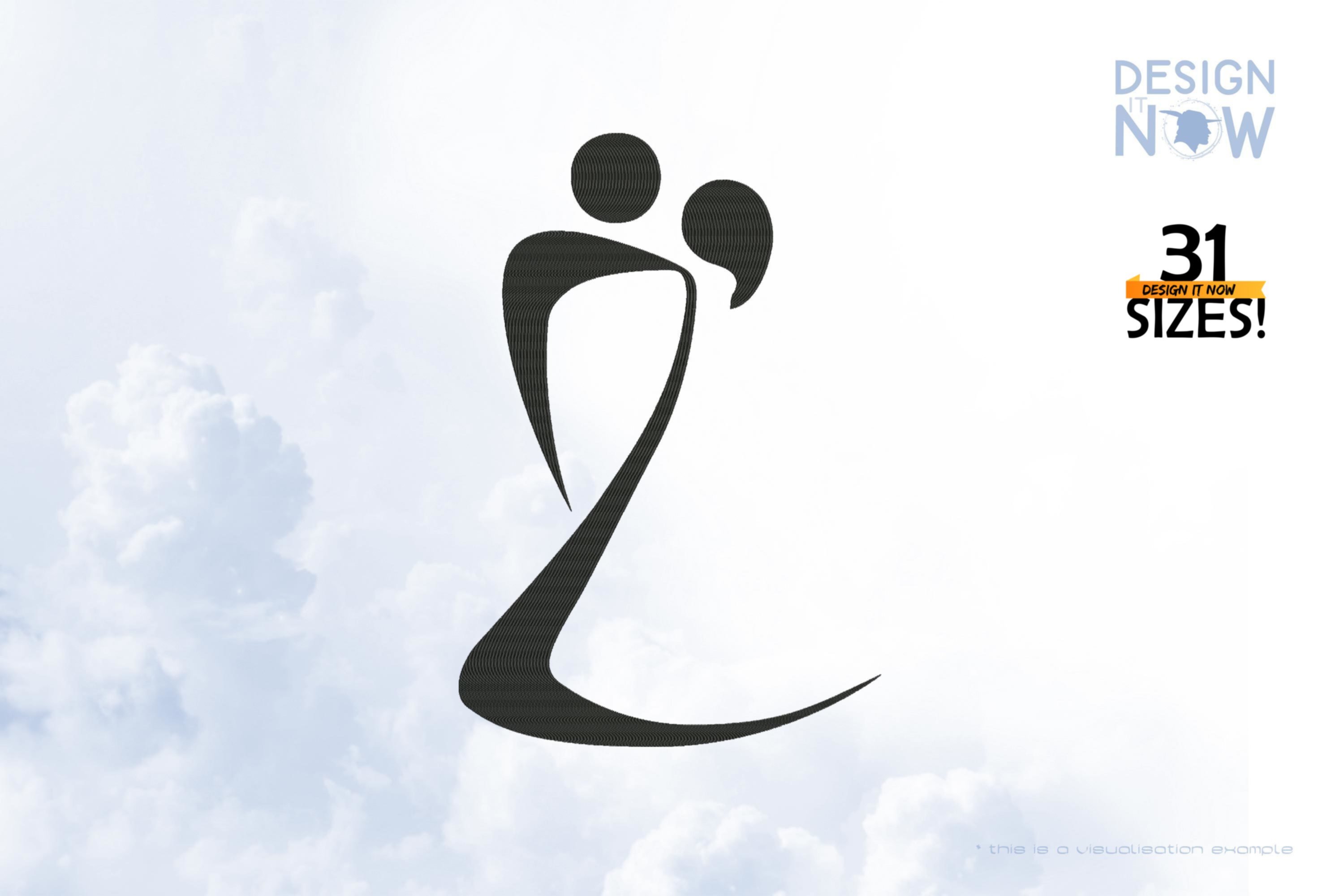
Woman / Man
Woman, Latin and technically also femina, refers to a female adult human being. Female children and adolescents are referred to as girls.
Females with typical genetic development have a pair of chromosomes XX and, unlike males, are usually able to become pregnant and bear children from puberty to menopause. The female anatomy, unlike the male, includes the fallopian tubes, ovaries, uterus, vagina, vulva, paraurethral gland, and Bartholin's glands. The adult female's pelvis is wider, hips are wider, and breasts are larger than those of an adult male. Women have significantly less facial and other body hair, a higher body fat composition, and are on average smaller and less muscular than men.
The word "woman" in its original sense refers to the biological sex "female."
The word man refers to a male adult human being and in its original sense refers to biological sex. Male children and adolescents are referred to as boys.
The development of biological sex is genetically determined by a pair of XY chromosomes, with the Y chromosome and the male sex hormone testosterone in particular controlling the development of male primary and secondary sexual characteristics. Men produce sperm that can be used to fertilize eggs. They are not capable of becoming pregnant at any stage of their lives, unlike women with typical genetic development.
The word "man" in its original sense refers to the biological sex "male".
%
Modern Dance
Dance is the transformation of inspiration (usually music and/or rhythm) into movement. Dancing is a ritual, a custom, a performing art genre, a professional activity, a sport, a form of therapy, a form of social interaction, or simply an expression of feeling. Other internationally used terms for dance titles are danza and danca. Dancing has many functions in society, but can also be an end in itself or a pastime. Ritualized dancing expresses togetherness and emotions and can accompany the acceptance of new members into a community as a festive initiation rite, for example when young girls are introduced to society at the debutante ball or when students celebrate passing an exam at the prom. Against a religious background, dance rituals honor gods or ask for assistance, while warding off or driving away evil spirits. Dancing as a sport promotes muscle development, motor skills, coordination and sense of balance. Successfully learning, planning and implementing complex movement sequences builds self-confidence and supports a healthy relationship with one's own body. As an art form, dancing serves to represent feelings and actions pictorially. Facial expressions, gestures and full-body dance movements, together with music, form the demanding working material of artistic dance, which shows the audience the elegance and expressiveness of the human body.Product Number: E00509Product Name: JumpingPersonThis design comes with the following sizes:Size: 2.3"(w) X 4.05"(h) (58.7 X 103.0mm) Size: 2.57"(w) X 4.5"(h) (65.4 X 114.2mm) Size: 2.85"(w) X 5.0"(h) (72.5 X 127.0mm) Size: 3.17"(w) X 5.5"(h) (80.60 X 141.0mm) Size: 3.53"(w) X 6.17"(h) (89.60 X 156.70mm) Size: 3.91"(w) X 6.86"(h) (99.40 X 174.20mm) Size: 4.34"(w) X 7.61"(h) (110.4 X 193.4mm) Size: 5.37"(w) X 9.10"(h) (136.4 X 238.8mm) Size: 5.96"(w) X 10.45"(h) (151.4 X 265.4mm) Size: 6.62"(w) X 11.61"(h) (168.2 X 294.8mm)The following formats are included in the file you will receive: .DST .EXP .JEF .PES .VP3 .XXX .VIP .HUSYou MUST have an embroidery machine and the software needed to transfer it from your computer to the machine to use this file. This listing is for the machine file only - not a finished item.Modern Dance Machine Embroidery Design, Performing Art Embroidery Pattern, Dancing Designs, Movement Embroidery Art, DIY Project Idea, Unique Digital Supplies For Embroidery Machines
US$1.10* US$4.40* (75% saved)
%
Soccer Player XIII
Soccer is a ball sport in which two teams compete against each other with the goal of scoring more goals than their opponents to win the game. The game is usually played for two 45-minute periods, plus overtime and, if necessary, extra time and/or penalties. A team usually consists of eleven players, one of whom is the goalkeeper. The ball may be played with the whole body except the arms and hands; it is mainly kicked with the foot. Only the goalkeeper (inside his own penalty area) - or the field players when taking a throw-in - may touch the ball with their hands.The success of soccer is based, firstly, on its simplicity. The cost of resources and equipment is relatively low (see, for example, street soccer), which has made it very popular in many developing countries, and it is easy for newcomers and spectators to understand or even take for granted. Secondly, the number of goals is relatively low, which increases the value of a goal and makes the games more exciting, since superior or better-placed teams do not win as often or can be determined as winners early on as in other ball sports.However, these special features have been counteracted in recent times by more complicated regulations (including changes to the offside rule) and ever greater (technical) expense in top-level soccer (including video evidence), which are intended to lead to "fairer" soccer.Soccer originated in Great Britain in the second half of the 19th century and spread to continental Europe and other continents from the 1880s and 1890s. It is considered the world's most popular team sport. Unlike other sports (such as handball), top clubs in soccer usually developed only in large cities, which can boast the very elaborate infrastructure with recently increasing demands.Product Number: N11118Product Name: SoccerIThis design comes with the following sizes:Size: 2.28"(w) X 3.50"(h) (57.8mm X 88.8mm) Size: 4.05"(w) X 6.21"(h) (102.8mm X 157.8mm) Size: 4.15"(w) X 6.37"(h) (105.4mm X 161.8mm) Size: 4.20"(w) X 6.45"(h) (106.6mm X 163.8mm) Size: 4.32"(w) X 6.65"(h) (109.8mm X 168.8mm) Size: 4.35"(w) X 6.69"(h) (110.6mm X 169.8mm) Size: 4.43"(w) X 6.80"(h) (112.4mm X 172.8mm) Size: 4.48"(w) X 6.88"(h) (113.8mm X 174.8mm) Size: 4.56"(w) X 7.00"(h) (115.8mm X 177.8mm) Size: 4.61"(w) X 7.08"(h) (117.0mm X 179.8mm) Size: 4.69"(w) X 7.20"(h) (119.0mm X 182.8mm) Size: 4.79"(w) X 7.35"(h) (121.6mm X 186.8mm) Size: 4.87"(w) X 7.47"(h) (123.6mm X 189.8mm) Size: 4.91"(w) X 7.55"(h) (124.8mm X 191.8mm) Size: 5.07"(w) X 7.79"(h) (128.8mm X 197.8mm) Size: 5.28"(w) X 8.10"(h) (134.0mm X 205.8mm) Size: 5.43"(w) X 8.34"(h) (137.8mm X 211.8mm) Size: 5.61"(w) X 8.61"(h) (142.4mm X 218.8mm) Size: 5.71"(w) X 8.77"(h) (145.0mm X 222.8mm) Size: 5.79"(w) X 8.89"(h) (147.0mm X 225.8mm) Size: 5.94"(w) X 9.13"(h) (150.8mm X 231.8mm) Size: 6.20"(w) X 9.52"(h) (157.4mm X 241.8mm) Size: 6.35"(w) X 9.76"(h) (161.4mm X 247.8mm) Size: 6.48"(w) X 9.95"(h) (164.6mm X 252.8mm) Size: 6.58"(w) X 10.11"(h) (167.2mm X 256.8mm) Size: 6.66"(w) X 10.23"(h) (169.2mm X 259.8mm) Size: 6.73"(w) X 10.35"(h) (171.0mm X 262.8mm) Size: 6.98"(w) X 10.74"(h) (177.4mm X 272.8mm) Size: 7.03"(w) X 10.82"(h) (178.6mm X 274.8mm) Size: 7.17"(w) X 11.02"(h) (182.2mm X 279.8mm) Size: 8.06"(w) X 12.39"(h) (204.8mm X 314.8mm) The following formats are included in the file you will receive: .DST .EXP .JEF .PES .VP3 .XXX .PEC .U01You MUST have an embroidery machine and the software needed to transfer it from your computer to the machine to use this file. This listing is for the machine file only - not a finished item.Soccer Player Machine Embroidery Design, Team Sport Embroidery Pattern, Sport Designs, Football Embroidery Art, Ball Sport, Field Players, DIY Project Idea, Unique Digital Supplies For Embroidery Machines
US$1.10* US$4.40* (75% saved)
%
Kendo Martial Art III
Kendo is a traditional Japanese art of fencing with a two-handed wooden sword, derived from the fighting methods of the ancient samurai. Participants wear traditional clothing and protective gear, including a jacket, long split skirt, chest protector, waist protector, mask and padded gloves. They use shinai, which are made of bamboo. Kendo as a path pursues not only the techniques and tactics of sword fighting, but also the spiritual training of the individual. It is widely practiced in Japan and has spread to many other countries around the world. Product Number: N11113Product Name: KendoIIIThis design comes with the following sizes:Size: 2.98"(w) X 2.05"(h) (75.8mm X 52.0mm) Size: 3.02"(w) X 2.07"(h) (76.8mm X 52.6mm) Size: 3.77"(w) X 2.59"(h) (95.8mm X 65.8mm)Size: 3.81"(w) X 2.61"(h) (96.8mm X 66.4mm) Size: 5.11"(w) X 3.50"(h) (129.8mm X 89.0mm) Size: 5.23"(w) X 3.59"(h) (132.8mm X 91.2mm) Size: 5.35"(w) X 3.67"(h) (135.8mm X 93.2mm) Size: 5.46"(w) X 3.75"(h) (138.8mm X 95.2mm) Size: 5.58"(w) X 3.83"(h) (141.8mm X 97.2mm) Size: 5.70"(w) X 3.91"(h) (144.8mm X 99.4mm) Size: 5.82"(w) X 3.99"(h) (147.8mm X 101.4mm) Size: 5.86"(w) X 4.02"(h) (148.8mm X 102.0mm) Size: 5.90"(w) X 4.05"(h) (149.8mm X 102.8mm) Size: 6.06"(w) X 4.16"(h) (153.8mm X 105.6mm) Size: 6.09"(w) X 4.18"(h) (154.8mm X 106.2mm) Size: 6.25"(w) X 4.29"(h) (158.8mm X 109.0mm) Size: 6.37"(w) X 4.37"(h) (161.8mm X 111.0mm) Size: 6.41"(w) X 4.40"(h) (162.8mm X 111.8mm) Size: 6.45"(w) X 4.43"(h) (163.8mm X 112.4mm) Size: 6.49"(w) X 4.45"(h) (164.8mm X 113.0mm) Size: 6.53"(w) X 4.48"(h) (165.8mm X 113.8mm) Size: 6.57"(w) X 4.50"(h) (166.8mm X 114.4mm) Size: 6.65"(w) X 4.56"(h) (168.8mm X 115.8mm) Size: 6.69"(w) X 4.59"(h) (169.8mm X 116.6mm) Size: 6.72"(w) X 4.61"(h) (170.8mm X 117.2mm) Size: 6.76"(w) X 4.64"(h) (171.8mm X 117.8mm) Size: 6.88"(w) X 4.72"(h) (174.8mm X 120.0mm) Size: 6.92"(w) X 4.75"(h) (175.8mm X 120.6mm) Size: 7.08"(w) X 4.86"(h) (179.8mm X 123.4mm) Size: 7.24"(w) X 4.97"(h) (183.8mm X 126.2mm) Size: 7.31"(w) X 5.02"(h) (185.8mm X 127.6mm) Size: 7.63"(w) X 5.24"(h) (193.8mm X 133.0mm) Size: 7.71"(w) X 5.29"(h) (195.8mm X 134.4mm) Size: 7.83"(w) X 5.37"(h) (198.8mm X 136.4mm) Size: 7.87"(w) X 5.40"(h) (199.8mm X 137.2mm) Size: 7.98"(w) X 5.48"(h) (202.8mm X 139.2mm) Size: 8.10"(w) X 5.56"(h) (205.8mm X 141.2mm) Size: 8.30"(w) X 5.69"(h) (210.8mm X 144.6mm) Size: 8.73"(w) X 5.99"(h) (221.8mm X 152.2mm) Size: 9.05"(w) X 6.21"(h) (229.8mm X 157.8mm) Size: 9.09"(w) X 6.24"(h) (230.8mm X 158.4mm) Size: 9.13"(w) X 6.26"(h) (231.8mm X 159.0mm) Size: 9.20"(w) X 6.31"(h) (233.8mm X 160.4mm) Size: 9.32"(w) X 6.40"(h) (236.8mm X 162.6mm)Size: 9.99"(w) X 6.86"(h) (253.8mm X 174.2mm) Size: 10.15"(w) X 6.97"(h) (257.8mm X 177.0mm) Size: 10.23"(w) X 7.02"(h) (259.8mm X 178.4mm) Size: 11.33"(w) X 7.78"(h) (287.8mm X 197.6mm) Size: 11.41"(w) X 7.83"(h) (289.8mm X 198.8mm) Size: 13.02"(w) X 8.94"(h) (330.8mm X 227.0mm) Size: 14.87"(w) X 10.20"(h) (377.8mm X 259.0mm)The following formats are included in the file you will receive: .DST .EXP .JEF .PES .VP3 .XXX .PEC .U01You MUST have an embroidery machine and the software needed to transfer it from your computer to the machine to use this file. This listing is for the machine file only - not a finished item.Kendo Martial Art Machine Embroidery Design, Kendo Art Of Fencing Embroidery Pattern, Fighting Methods Shinai Sword Embroidery Art, Sport DIY Project Ideas, Beautiful Digital Supplies For Embroidery Machines
US$1.10* US$4.40* (75% saved)
%
Female Line Art III
Lineart, line art or line art (English for "line graphics", "drawing" or literally: "line art") is the term used in cartoon, comic and manga art for a finished inked drawing that is not (or not yet) colored. Linearts are a special form of graphic art, illustration or drawing that consists solely of lines and does not contain any color-filled ("colored") areas. In comic art, the term lineart is most often used to distinguish the uncolored but otherwise finished inked drawing in the artistic process from the pencil preliminary drawing that precedes it and from the colored drawing that follows. Although the term lineart is rarely used in other art genres, most monochrome tattoos, as well as the pre-printed drawings in children's coloring books, are also other examples of lineart. In chat and microblogging, lineart stands for ASCII art that spans only one line.Product Number: N07690Product Name: LineArt-People-00001024This design comes with the following sizes:Size: 4.82"(w) X 4.99"(h) (122.4mm X 126.8mm) Size: 5.09"(w) X 5.29"(h) (129.2mm X 134.4mm) Size: 5.12"(w) X 5.31"(h) (130.0mm X 135.0mm) Size: 5.24"(w) X 5.41"(h) (133.0mm X 137.4mm) Size: 5.35"(w) X 5.55"(h) (135.8mm X 141.0mm) Size: 5.39"(w) X 5.57"(h) (136.8mm X 141.6mm) Size: 5.46"(w) X 5.65"(h) (138.6mm X 143.6mm) Size: 5.57"(w) X 5.79"(h) (141.6mm X 147.0mm) Size: 5.83"(w) X 6.05"(h) (148.2mm X 153.6mm) Size: 5.95"(w) X 6.19"(h) (151.2mm X 157.2mm) Size: 6.02"(w) X 6.27"(h) (153.0mm X 159.2mm) Size: 6.10"(w) X 6.35"(h) (155.0mm X 161.2mm) Size: 6.29"(w) X 6.53"(h) (159.8mm X 165.8mm) Size: 4.82"(w) X 4.99"(h) (122.4mm X 126.8mm) Size: 5.09"(w) X 5.29"(h) (129.2mm X 134.4mm) Size: 5.12"(w) X 5.31"(h) (130.0mm X 135.0mm) Size: 5.24"(w) X 5.41"(h) (133.0mm X 137.4mm) Size: 5.35"(w) X 5.55"(h) (135.8mm X 141.0mm) Size: 5.39"(w) X 5.57"(h) (136.8mm X 141.6mm) Size: 5.46"(w) X 5.65"(h) (138.6mm X 143.6mm) Size: 5.57"(w) X 5.79"(h) (141.6mm X 147.0mm) Size: 5.83"(w) X 6.05"(h) (148.2mm X 153.6mm) Size: 5.95"(w) X 6.19"(h) (151.2mm X 157.2mm) Size: 6.02"(w) X 6.27"(h) (153.0mm X 159.2mm) Size: 6.10"(w) X 6.35"(h) (155.0mm X 161.2mm) Size: 6.29"(w) X 6.53"(h) (159.8mm X 165.8mm) Size: 6.33"(w) X 6.58"(h) (160.8mm X 167.2mm) Size: 6.52"(w) X 6.76"(h) (165.6mm X 171.8mm) Size: 6.55"(w) X 6.82"(h) (166.4mm X 173.2mm) Size: 6.67"(w) X 6.92"(h) (169.4mm X 175.8mm) Size: 6.70"(w) X 6.94"(h) (170.2mm X 176.4mm) Size: 7.05"(w) X 7.32"(h) (179.0mm X 186.0mm) Size: 7.39"(w) X 7.66"(h) (187.6mm X 194.6mm) Size: 7.42"(w) X 7.72"(h) (188.4mm X 196.0mm) Size: 7.54"(w) X 7.82"(h) (191.4mm X 198.6mm) Size: 7.65"(w) X 7.96"(h) (194.2mm X 202.2mm) Size: 7.69"(w) X 7.98"(h) (195.2mm X 202.8mm) Size: 7.72"(w) X 8.04"(h) (196.2mm X 204.2mm)Size: 7.76"(w) X 8.06"(h) (197.2mm X 204.8mm) Size: 7.87"(w) X 8.20"(h) (200.0mm X 208.2mm) Size: 7.98"(w) X 8.30"(h) (202.8mm X 210.8mm) Size: 8.02"(w) X 8.35"(h) (203.8mm X 212.2mm) Size: 8.06"(w) X 8.38"(h) (204.8mm X 212.8mm) Size: 8.44"(w) X 8.77"(h) (214.4mm X 222.8mm) Size: 8.48"(w) X 8.83"(h) (215.4mm X 224.4mm) Size: 8.55"(w) X 8.91"(h) (217.2mm X 226.4mm) Size: 8.70"(w) X 9.04"(h) (221.0mm X 229.6mm) Size: 8.82"(w) X 9.17"(h) (224.0mm X 233.0mm) Size: 8.93"(w) X 9.28"(h) (226.8mm X 235.6mm) Size: 9.04"(w) X 9.41"(h) (229.6mm X 239.0mm) Size: 9.12"(w) X 9.49"(h) (231.6mm X 241.0mm) Size: 9.54"(w) X 9.91"(h) (242.2mm X 251.8mm) Size: 9.61"(w) X 9.99"(h) (244.0mm X 253.8mm) Size: 9.91"(w) X 10.31"(h) (251.8mm X 261.8mm) Size: 9.98"(w) X 10.39"(h) (253.6mm X 263.8mm) Size: 10.17"(w) X 10.61"(h) (258.4mm X 269.4mm) Size: 10.21"(w) X 10.63"(h) (259.4mm X 270.0mm) Size: 10.40"(w) X 10.81"(h) (264.2mm X 274.6mm) Size: 10.47"(w) X 10.89"(h) (266.0mm X 276.6mm) Size: 10.74"(w) X 11.18"(h) (272.8mm X 284.0mm) Size: 10.85"(w) X 11.28"(h) (275.6mm X 286.6mm) Size: 11.00"(w) X 11.44"(h) (279.4mm X 290.6mm) Size: 11.23"(w) X 11.69"(h) (285.2mm X 296.8mm) Size: 11.31"(w) X 11.76"(h) (287.2mm X 298.8mm) Size: 11.42"(w) X 11.90"(h) (290.0mm X 302.2mm) Size: 11.65"(w) X 12.13"(h) (295.8mm X 308.2mm) Size: 11.87"(w) X 12.37"(h) (301.6mm X 314.2mm) Size: 12.06"(w) X 12.56"(h) (306.4mm X 319.0mm) Size: 12.21"(w) X 12.72"(h) (310.2mm X 323.0mm) Size: 12.36"(w) X 12.87"(h) (314.0mm X 327.0mm) Size: 12.43"(w) X 12.95"(h) (315.8mm X 329.0mm) Size: 13.57"(w) X 14.14"(h) (344.6mm X 359.2mm)The following formats are included in the file you will receive: .DST .EXP .JEF .PES .VP3 .XXX .PEC .U01You MUST have an embroidery machine and the software needed to transfer it from your computer to the machine to use this file. This listing is for the machine file only - not a finished item.Line Art Dancing Female Person Girl Woman Machine Embroidery Design, Artistic Embroidery Pattern, Lineart Designs, Drawing Art Embroidery Art, DIY Project Idea, Unique Digital Supplies For Embroidery Machines
US$1.10* US$4.40* (75% saved)
%
Soccer Player XII
Soccer is a ball sport in which two teams compete against each other with the goal of scoring more goals than their opponents to win the game. The game is usually played for two 45-minute periods, plus overtime and, if necessary, extra time and/or penalties. A team usually consists of eleven players, one of whom is the goalkeeper. The ball may be played with the whole body except the arms and hands; it is mainly kicked with the foot. Only the goalkeeper (inside his own penalty area) - or the field players when taking a throw-in - may touch the ball with their hands.The success of soccer is based, firstly, on its simplicity. The cost of resources and equipment is relatively low (see, for example, street soccer), which has made it very popular in many developing countries, and it is easy for newcomers and spectators to understand or even take for granted. Secondly, the number of goals is relatively low, which increases the value of a goal and makes the games more exciting, since superior or better-placed teams do not win as often or can be determined as winners early on as in other ball sports.However, these special features have been counteracted in recent times by more complicated regulations (including changes to the offside rule) and ever greater (technical) expense in top-level soccer (including video evidence), which are intended to lead to "fairer" soccer.Soccer originated in Great Britain in the second half of the 19th century and spread to continental Europe and other continents from the 1880s and 1890s. It is considered the world's most popular team sport. Unlike other sports (such as handball), top clubs in soccer usually developed only in large cities, which can boast the very elaborate infrastructure with recently increasing demands.Product Number: N11114Product Name: SoccerIIThis design comes with the following sizes:Size: 5.27"(w) X 3.80"(h) (133.8mm X 96.6mm) Size: 5.58"(w) X 4.03"(h) (141.8mm X 102.4mm) Size: 5.66"(w) X 4.09"(h) (143.8mm X 103.8mm) Size: 5.86"(w) X 4.23"(h) (148.8mm X 107.4mm) Size: 5.90"(w) X 4.26"(h) (149.8mm X 108.2mm) Size: 5.97"(w) X 4.31"(h) (151.6mm X 109.6mm) Size: 6.06"(w) X 4.37"(h) (153.8mm X 111.0mm) Size: 6.09"(w) X 4.40"(h) (154.8mm X 111.8mm) Size: 6.29"(w) X 4.54"(h) (159.8mm X 115.4mm) Size: 6.37"(w) X 4.60"(h) (161.8mm X 116.8mm) Size: 6.45"(w) X 4.65"(h) (163.8mm X 118.2mm) Size: 6.52"(w) X 4.71"(h) (165.6mm X 119.6mm) Size: 6.80"(w) X 4.91"(h) (172.8mm X 124.8mm) Size: 6.96"(w) X 5.02"(h) (176.8mm X 127.6mm) Size: 7.08"(w) X 5.11"(h) (179.8mm X 129.8mm) Size: 7.23"(w) X 5.22"(h) (183.6mm X 132.6mm) Size: 7.54"(w) X 5.45"(h) (191.6mm X 138.4mm) Size: 7.58"(w) X 5.48"(h) (192.6mm X 139.2mm) Size: 7.67"(w) X 5.54"(h) (194.8mm X 140.6mm) Size: 8.09"(w) X 5.85"(h) (205.6mm X 148.6mm) Size: 8.85"(w) X 6.39"(h) (224.8mm X 162.4mm) Size: 9.05"(w) X 6.54"(h) (229.8mm X 166.0mm) Size: 9.12"(w) X 6.59"(h) (231.6mm X 167.4mm) Size: 9.24"(w) X 6.68"(h) (234.8mm X 169.6mm) Size: 9.63"(w) X 6.96"(h) (244.6mm X 176.8mm) Size: 9.95"(w) X 7.19"(h) (252.8mm X 182.6mm) Size: 10.82"(w) X 7.81"(h) (274.8mm X 198.4mm) Size: 11.48"(w) X 8.29"(h) (291.6mm X 210.6mm) Size: 13.65"(w) X 9.86"(h) (346.6mm X 250.4mm) Size: 14.87"(w) X 10.74"(h) (377.6mm X 272.8mm)The following formats are included in the file you will receive: .DST .EXP .JEF .PES .VP3 .XXX .PEC .U01You MUST have an embroidery machine and the software needed to transfer it from your computer to the machine to use this file. This listing is for the machine file only - not a finished item.Soccer Player Silhouette Machine Embroidery Design, Team Sport Embroidery Pattern, Sport Designs, Football Embroidery Art, Ball Sport, Field Players, DIY Project Idea, Unique Digital Supplies For Embroidery Machines
US$1.10* US$4.40* (75% saved)
%
Soccer Sport
Soccer is a ball sport in which two teams compete against each other with the goal of scoring more goals than their opponents to win the game. The game is usually played for two 45-minute periods, plus overtime and, if necessary, extra time and/or penalties. A team usually consists of eleven players, one of whom is the goalkeeper. The ball may be played with the whole body except the arms and hands; it is mainly kicked with the foot. Only the goalkeeper (inside his own penalty area) - or the field players when taking a throw-in - may touch the ball with their hands.The success of soccer is based, firstly, on its simplicity. The cost of resources and equipment is relatively low (see, for example, street soccer), which has made it very popular in many developing countries, and it is easy for newcomers and spectators to understand or even take for granted. Secondly, the number of goals is relatively low, which increases the value of a goal and makes the games more exciting, since superior or better-placed teams do not win as often or can be determined as winners early on as in other ball sports.However, these special features have been counteracted in recent times by more complicated regulations (including changes to the offside rule) and ever greater (technical) expense in top-level soccer (including video evidence), which are intended to lead to "fairer" soccer.Soccer originated in Great Britain in the second half of the 19th century and spread to continental Europe and other continents from the 1880s and 1890s. It is considered the world's most popular team sport. Unlike other sports (such as handball), top clubs in soccer usually developed only in large cities, which can boast the very elaborate infrastructure with recently increasing demands.Product Number: N11140Product Name: soccer-playerThis design comes with the following sizes:Size: 11.80"(w) X 7.39"(h) (299.8mm X 187.6mm) Size: 11.88"(w) X 7.43"(h) (301.8mm X 188.8mm) Size: 11.92"(w) X 7.46"(h) (302.8mm X 189.4mm) Size: 12.39"(w) X 7.76"(h) (314.8mm X 197.0mm) Size: 13.57"(w) X 8.50"(h) (344.8mm X 215.8mm) Size: 14.01"(w) X 8.76"(h) (355.8mm X 222.6mm) Size: 14.87"(w) X 9.31"(h) (377.8mm X 236.4mm)The following formats are included in the file you will receive: .DST .EXP .JEF .PES .VP3 .XXX .PEC .U01You MUST have an embroidery machine and the software needed to transfer it from your computer to the machine to use this file. This listing is for the machine file only - not a finished item.Soccer Sport Player Machine Embroidery Design, Team Sport Embroidery Pattern, Sport Designs, Football Embroidery Art, Ball Sport, Field Players, DIY Project Idea, Unique Digital Supplies For Embroidery Machines
US$1.10* US$4.40* (75% saved)
%
Kendo Martial Art II
Kendo is a traditional Japanese martial art of fencing with a two-handed wooden sword, derived from the fighting methods of the ancient samurai. Participants wear traditional clothing and protective gear, including a jacket, long split skirt, chest protector, waist protector, mask and padded gloves. They use shinai, which are made of bamboo. Kendo as a path pursues not only the techniques and tactics of sword fighting, but also the spiritual training of the individual. It is widely practiced in Japan and has spread to many other countries around the world. Product Number: N11116Product Name: KendoIVThis design comes with the following sizes:Size: 2.47"(w) X 2.16"(h) (62.8mm X 54.8mm) Size: 2.51"(w) X 2.19"(h) (63.8mm X 55.6mm) Size: 2.91"(w) X 2.54"(h) (73.8mm X 64.4mm) Size: 5.31"(w) X 4.63"(h) (134.8mm X 117.6mm) Size: 5.35"(w) X 4.67"(h) (135.8mm X 118.6mm) Size: 5.50"(w) X 4.80"(h) (139.8mm X 122.0mm) Size: 5.58"(w) X 4.87"(h) (141.8mm X 123.8mm) Size: 5.62"(w) X 4.91"(h) (142.8mm X 124.6mm) Size: 5.74"(w) X 5.01"(h) (145.8mm X 127.2mm) Size: 5.90"(w) X 5.15"(h) (149.8mm X 130.8mm) Size: 5.94"(w) X 5.18"(h) (150.8mm X 131.6mm) Size: 6.02"(w) X 5.25"(h) (152.8mm X 133.4mm) Size: 6.09"(w) X 5.31"(h) (154.8mm X 135.0mm) Size: 6.37"(w) X 5.56"(h) (161.8mm X 141.2mm) Size: 6.88"(w) X 6.01"(h) (174.8mm X 152.6mm) Size: 7.16"(w) X 6.24"(h) (181.8mm X 158.6mm) Size: 7.55"(w) X 6.59"(h) (191.8mm X 167.4mm) Size: 7.63"(w) X 6.66"(h) (193.8mm X 169.2mm) Size: 8.42"(w) X 7.34"(h) (213.8mm X 186.4mm) Size: 9.32"(w) X 8.13"(h) (236.8mm X 206.6mm) Size: 9.52"(w) X 8.30"(h) (241.8mm X 210.8mm) Size: 9.80"(w) X 8.54"(h) (248.8mm X 216.8mm) Size: 10.15"(w) X 8.85"(h) (257.8mm X 224.8mm) Size: 10.35"(w) X 9.02"(h) (262.8mm X 229.0mm) Size: 10.86"(w) X 9.46"(h) (275.8mm X 240.4mm) Size: 11.17"(w) X 9.74"(h) (283.8mm X 247.4mm) Size: 11.49"(w) X 10.02"(h) (291.8mm X 254.4mm) Size: 12.08"(w) X 10.53"(h) (306.8mm X 267.4mm) Size: 12.75"(w) X 11.12"(h) (323.8mm X 282.4mm) Size: 13.42"(w) X 11.70"(h) (340.8mm X 297.2mm) The following formats are included in the file you will receive: .DST .EXP .JEF .PES .VP3 .XXX .PEC .U01You MUST have an embroidery machine and the software needed to transfer it from your computer to the machine to use this file. This listing is for the machine file only - not a finished item.Kendo Martial Way Art Machine Embroidery Design, Kendo Art Of Fencing Embroidery Pattern, Fighting Methods Shinai Sword Embroidery Art, Sport DIY Project Ideas, Beautiful Digital Supplies For Embroidery Machines
US$1.10* US$4.40* (75% saved)
%
Kendo Martial Art I
Kendo is a traditional Japanese art of fencing with a two-handed wooden sword, derived from the fighting methods of the ancient samurai. Participants wear traditional clothing and protective gear, including a jacket, long split skirt, chest protector, waist protector, mask and padded gloves. They use shinai, which are made of bamboo. Kendo as a path pursues not only the techniques and tactics of sword fighting, but also the spiritual training of the individual. It is widely practiced in Japan and has spread to many other countries around the world. Product Number: N11117Product Name: KendoIThis design comes with the following sizes:Size: 1.82"(w) X 3.81"(h) (46.2mm X 96.8mm) Size: 1.86"(w) X 3.88"(h) (47.2mm X 98.6mm) Size: 2.31"(w) X 4.83"(h) (58.6mm X 122.8mm) Size: 2.36"(w) X 4.95"(h) (60.0mm X 125.8mm) Size: 2.46"(w) X 5.15"(h) (62.6mm X 130.8mm) Size: 2.52"(w) X 5.27"(h) (64.0mm X 133.8mm) Size: 2.61"(w) X 5.46"(h) (66.2mm X 138.8mm)Size: 2.67"(w) X 5.58"(h) (67.8mm X 141.8mm) Size: 2.69"(w) X 5.62"(h) (68.2mm X 142.8mm) Size: 2.74"(w) X 5.73"(h) (69.6mm X 145.6mm) Size: 2.78"(w) X 5.82"(h) (70.6mm X 147.8mm) Size: 2.83"(w) X 5.93"(h) (72.0mm X 150.6mm) Size: 2.91"(w) X 6.09"(h) (74.0mm X 154.8mm) Size: 2.93"(w) X 6.13"(h) (74.4mm X 155.6mm) Size: 2.95"(w) X 6.17"(h) (75.0mm X 156.8mm) Size: 2.96"(w) X 6.21"(h) (75.2mm X 157.8mm) Size: 2.98"(w) X 6.25"(h) (75.8mm X 158.8mm) Size: 3.02"(w) X 6.32"(h) (76.6mm X 160.6mm) Size: 3.08"(w) X 6.45"(h) (78.2mm X 163.8mm) Size: 3.09"(w) X 6.49"(h) (78.6mm X 164.8mm) Size: 3.12"(w) X 6.52"(h) (79.2mm X 165.6mm) Size: 3.13"(w) X 6.56"(h) (79.6mm X 166.6mm) Size: 3.17"(w) X 6.65"(h) (80.6mm X 168.8mm) Size: 3.24"(w) X 6.80"(h) (82.4mm X 172.8mm) Size: 3.27"(w) X 6.84"(h) (83.0mm X 173.8mm) Size: 3.29"(w) X 6.88"(h) (83.6mm X 174.8mm) Size: 3.30"(w) X 6.91"(h) (83.8mm X 175.6mm) Size: 3.32"(w) X 6.95"(h) (84.4mm X 176.6mm) Size: 3.38"(w) X 7.08"(h) (85.8mm X 179.8mm) Size: 3.40"(w) X 7.11"(h) (86.4mm X 180.6mm) Size: 3.41"(w) X 7.15"(h) (86.6mm X 181.6mm) Size: 3.44"(w) X 7.20"(h) (87.4mm X 182.8mm) Size: 3.46"(w) X 7.24"(h) (87.8mm X 183.8mm) Size: 3.47"(w) X 7.28"(h) (88.2mm X 184.8mm) Size: 3.49"(w) X 7.31"(h) (88.6mm X 185.8mm) Size: 3.53"(w) X 7.39"(h) (89.6mm X 187.6mm) Size: 3.57"(w) X 7.47"(h) (90.8mm X 189.8mm) Size: 3.61"(w) X 7.54"(h) (91.6mm X 191.6mm) Size: 3.62"(w) X 7.58"(h) (92.0mm X 192.6mm) Size: 3.66"(w) X 7.67"(h) (93.0mm X 194.8mm) Size: 3.72"(w) X 7.78"(h) (94.4mm X 197.6mm) Size: 3.74"(w) X 7.83"(h) (95.0mm X 198.8mm) Size: 3.76"(w) X 7.87"(h) (95.4mm X 199.8mm) Size: 3.80"(w) X 7.94"(h) (96.4mm X 201.8mm) Size: 3.85"(w) X 8.06"(h) (97.8mm X 204.8mm) Size: 3.87"(w) X 8.10"(h) (98.2mm X 205.8mm) Size: 3.89"(w) X 8.13"(h) (98.8mm X 206.6mm) Size: 3.94"(w) X 8.26"(h) (100.2mm X 209.8mm) Size: 4.02"(w) X 8.41"(h) (102.2mm X 213.6mm) Size: 4.04"(w) X 8.46"(h) (102.6mm X 214.8mm) Size: 4.11"(w) X 8.61"(h) (104.4mm X 218.6mm) Size: 4.13"(w) X 8.65"(h) (104.8mm X 219.8mm) Size: 4.17"(w) X 8.73"(h) (106.0mm X 221.8mm) Size: 4.23"(w) X 8.85"(h) (107.4mm X 224.8mm) Size: 4.60"(w) X 9.63"(h) (116.8mm X 244.6mm) Size: 4.69"(w) X 9.83"(h) (119.2mm X 249.6mm) Size: 4.75"(w) X 9.95"(h) (120.6mm X 252.8mm) Size: 5.00"(w) X 10.46"(h) (127.0mm X 265.6mm) Size: 5.28"(w) X 11.05"(h) (134.0mm X 280.6mm) Size: 5.35"(w) X 11.20"(h) (135.8mm X 284.6mm) Size: 5.63"(w) X 11.80"(h) (143.0mm X 299.6mm) Size: 5.96"(w) X 12.46"(h) (151.4mm X 316.6mm) Size: 6.02"(w) X 12.59"(h) (152.8mm X 319.8mm) Size: 7.52"(w) X 15.73"(h) (191.0mm X 399.6mm) The following formats are included in the file you will receive: .DST .EXP .JEF .PES .VP3 .XXX .PEC .U01You MUST have an embroidery machine and the software needed to transfer it from your computer to the machine to use this file. This listing is for the machine file only - not a finished item.Kendo Martial Art Machine Embroidery Design, Kendo Art Of Fencing Embroidery Pattern, Fighting Methods Shinai Sword Embroidery Art, Sport DIY Project Ideas, Beautiful Digital Supplies For Embroidery Machines
US$1.10* US$4.40* (75% saved)
%
Dancing Pair
Dance is the transformation of inspiration (usually music and/or rhythm) into movement. Dancing is a ritual, a custom, a performing art genre, a professional activity, a sport, a form of therapy, a form of social interaction, or simply an expression of feeling. Other internationally used terms for dance titles are danza and danca. Dancing has many functions in society, but can also be an end in itself or a pastime. Ritualized dancing expresses togetherness and emotions and can accompany the acceptance of new members into a community as a festive initiation rite, for example when young girls are introduced to society at the debutante ball or when students celebrate passing an exam at the prom. Against a religious background, dance rituals honor gods or ask for assistance, while warding off or driving away evil spirits. Dancing as a sport promotes muscle development, motor skills, coordination and sense of balance. Successfully learning, planning and implementing complex movement sequences builds self-confidence and supports a healthy relationship with one's own body. As an art form, dancing serves to represent feelings and actions pictorially. Facial expressions, gestures and full-body dance movements, together with music, form the demanding working material of artistic dance, which shows the audience the elegance and expressiveness of the human body.Product Number: N10310Product Name: Dance-IThis design comes with the following sizes:Size: 5.41"(w) X 5.77"(h) (137.4mm X 146.6mm) Size: 5.48"(w) X 5.85"(h) (139.2mm X 148.6mm) Size: 5.81"(w) X 6.20"(h) (147.6mm X 157.6mm) Size: 5.88"(w) X 6.28"(h) (149.4mm X 159.6mm) Size: 5.99"(w) X 6.40"(h) (152.2mm X 162.6mm) Size: 6.10"(w) X 6.51"(h) (155.0mm X 165.4mm) Size: 6.21"(w) X 6.63"(h) (157.8mm X 168.4mm) Size: 6.44"(w) X 6.87"(h) (163.6mm X 174.6mm) Size: 6.55"(w) X 6.99"(h) (166.4mm X 177.6mm) Size: 6.73"(w) X 7.18"(h) (171.0mm X 182.4mm) Size: 6.77"(w) X 7.23"(h) (172.0mm X 183.6mm) Size: 6.99"(w) X 7.46"(h) (177.6mm X 189.6mm) Size: 7.02"(w) X 7.50"(h) (178.4mm X 190.4mm) Size: 7.10"(w) X 7.57"(h) (180.4mm X 192.4mm) Size: 7.65"(w) X 8.17"(h) (194.4mm X 207.4mm) Size: 7.72"(w) X 8.24"(h) (196.2mm X 209.4mm) Size: 7.76"(w) X 8.28"(h) (197.2mm X 210.4mm) Size: 8.02"(w) X 8.56"(h) (203.8mm X 217.4mm) Size: 8.06"(w) X 8.60"(h) (204.6mm X 218.4mm) Size: 8.28"(w) X 8.83"(h) (210.2mm X 224.4mm) Size: 8.35"(w) X 8.91"(h) (212.2mm X 226.4mm) Size: 9.13"(w) X 9.74"(h) (231.8mm X 247.4mm) Size: 9.68"(w) X 10.33"(h) (245.8mm X 262.4mm) Size: 9.94"(w) X 10.61"(h) (252.4mm X 269.4mm) Size: 10.86"(w) X 11.59"(h) (275.8mm X 294.4mm) Size: 11.04"(w) X 11.79"(h) (280.4mm X 299.4mm) Size: 12.88"(w) X 13.75"(h) (327.2mm X 349.2mm)The following formats are included in the file you will receive: .DST .EXP .JEF .PES .VP3 .XXX .PEC .U01You MUST have an embroidery machine and the software needed to transfer it from your computer to the machine to use this file. This listing is for the machine file only - not a finished item.Dance Dancing Pair Symbol Weeding Machine Embroidery Design, Performing Art Embroidery Pattern, Dancing Designs, Movement Embroidery Art, DIY Project Idea, Unique Digital Supplies For Embroidery Machines
US$1.10* US$4.40* (75% saved)
%
Dancing Pair Symbol
Dance is the transformation of inspiration (usually music and/or rhythm) into movement. Dancing is a ritual, a custom, a performing art genre, a professional activity, a sport, a form of therapy, a form of social interaction, or simply an expression of feeling. Other internationally used terms for dance titles are danza and danca. Dancing has many functions in society, but can also be an end in itself or a pastime. Ritualized dancing expresses togetherness and emotions and can accompany the acceptance of new members into a community as a festive initiation rite, for example when young girls are introduced to society at the debutante ball or when students celebrate passing an exam at the prom. Against a religious background, dance rituals honor gods or ask for assistance, while warding off or driving away evil spirits. Dancing as a sport promotes muscle development, motor skills, coordination and sense of balance. Successfully learning, planning and implementing complex movement sequences builds self-confidence and supports a healthy relationship with one's own body. As an art form, dancing serves to represent feelings and actions pictorially. Facial expressions, gestures and full-body dance movements, together with music, form the demanding working material of artistic dance, which shows the audience the elegance and expressiveness of the human body.Product Number: N10200Product Name: Dance-XIVThis design comes with the following sizes:Size: 2.13"(w) X 3.10"(h) (54.0mm X 78.8mm) Size: 4.00"(w) X 5.81"(h) (101.6mm X 147.6mm) Size: 4.03"(w) X 5.85"(h) (102.4mm X 148.6mm) Size: 4.27"(w) X 6.20"(h) (108.4mm X 157.6mm) Size: 4.39"(w) X 6.36"(h) (111.4mm X 161.6mm) Size: 4.40"(w) X 6.40"(h) (111.8mm X 162.6mm) Size: 4.43"(w) X 6.43"(h) (112.6mm X 163.4mm) Size: 4.57"(w) X 6.63"(h) (116.0mm X 168.4mm) Size: 4.59"(w) X 6.68"(h) (116.6mm X 169.6mm) Size: 4.62"(w) X 6.72"(h) (117.4mm X 170.6mm) Size: 4.65"(w) X 6.76"(h) (118.2mm X 171.6mm) Size: 4.73"(w) X 6.87"(h) (120.2mm X 174.6mm) Size: 4.87"(w) X 7.07"(h) (123.8mm X 179.6mm) Size: 4.95"(w) X 7.19"(h) (125.8mm X 182.6mm) Size: 4.98"(w) X 7.23"(h) (126.6mm X 183.6mm) Size: 5.24"(w) X 7.62"(h) (133.2mm X 193.6mm) Size: 5.30"(w) X 7.69"(h) (134.6mm X 195.4mm) Size: 5.41"(w) X 7.86"(h) (137.4mm X 199.6mm) Size: 5.50"(w) X 7.98"(h) (139.6mm X 202.6mm) Size: 5.57"(w) X 8.09"(h) (141.6mm X 205.4mm) Size: 5.72"(w) X 8.29"(h) (145.2mm X 210.6mm) Size: 5.80"(w) X 8.40"(h) (147.2mm X 213.4mm) Size: 5.98"(w) X 8.69"(h) (151.8mm X 220.6mm) Size: 6.01"(w) X 8.72"(h) (152.6mm X 221.6mm) Size: 6.17"(w) X 8.95"(h) (156.8mm X 227.4mm) Size: 6.28"(w) X 9.11"(h) (159.4mm X 231.4mm) Size: 6.50"(w) X 9.43"(h) (165.0mm X 239.4mm) Size: 6.98"(w) X 10.13"(h) (177.4mm X 257.4mm) Size: 7.80"(w) X 11.31"(h) (198.2mm X 287.4mm) Size: 7.86"(w) X 11.39"(h) (199.6mm X 289.4mm) Size: 10.23"(w) X 14.85"(h) (259.8mm X 377.2mm) The following formats are included in the file you will receive: .DST .EXP .JEF .PES .VP3 .XXX .PEC .U01You MUST have an embroidery machine and the software needed to transfer it from your computer to the machine to use this file. This listing is for the machine file only - not a finished item.Dancing Pair Symbol Machine Embroidery Design, Performing Art Embroidery Pattern, Dancing Designs, Movement Embroidery Art, DIY Project Idea, Unique Digital Supplies For Embroidery Machines
US$1.10* US$4.40* (75% saved)
%
Women Soccer Sport
Soccer is a ball sport in which two teams compete against each other with the goal of scoring more goals than their opponents to win the game. The game is usually played for two 45-minute periods, plus overtime and, if necessary, extra time and/or penalties. A team usually consists of eleven players, one of whom is the goalkeeper. The ball may be played with the whole body except the arms and hands; it is mainly kicked with the foot. Only the goalkeeper (inside his own penalty area) - or the field players when taking a throw-in - may touch the ball with their hands.The success of soccer is based, firstly, on its simplicity. The cost of resources and equipment is relatively low (see, for example, street soccer), which has made it very popular in many developing countries, and it is easy for newcomers and spectators to understand or even take for granted. Secondly, the number of goals is relatively low, which increases the value of a goal and makes the games more exciting, since superior or better-placed teams do not win as often or can be determined as winners early on as in other ball sports.However, these special features have been counteracted in recent times by more complicated regulations (including changes to the offside rule) and ever greater (technical) expense in top-level soccer (including video evidence), which are intended to lead to "fairer" soccer.Soccer originated in Great Britain in the second half of the 19th century and spread to continental Europe and other continents from the 1880s and 1890s. It is considered the world's most popular team sport. Unlike other sports (such as handball), top clubs in soccer usually developed only in large cities, which can boast the very elaborate infrastructure with recently increasing demands.Product Number: N03816Product Name: SoccerThis design comes with the following sizes:Size: 2.39"(w) X 3.95"(h) (60.8 X 100.3mm) Size: 2.87"(w) X 4.74"(h) (72.8 X 120.3mm) Size: 3.35"(w) X 5.52"(h) (85.0 X 140.3mm) Size: 4.06"(w) X 6.70"(h) (103.2 X 170.3mm) Size: 4.75"(w) X 7.85"(h) (120.6 X 199.3mm) The following formats are included in the file you will receive: .DST .EXP .JEF .PES .VP3 .XXX .VIP .HUSYou MUST have an embroidery machine and the software needed to transfer it from your computer to the machine to use this file. This listing is for the machine file only - not a finished item.Women Soccer Sport Machine Embroidery Design, Team Sport Embroidery Pattern, Sport Designs, Football Embroidery Art, Ball Sport, Field Players, DIY Project Idea, Unique Digital Supplies For Embroidery Machines
US$1.10* US$4.40* (75% saved)
%
Female Soccer Players
Soccer is a ball sport in which two teams compete against each other with the goal of scoring more goals than their opponents to win the game. The game is usually played for two 45-minute periods, plus overtime and, if necessary, extra time and/or penalties. A team usually consists of eleven players, one of whom is the goalkeeper. The ball may be played with the whole body except the arms and hands; it is mainly kicked with the foot. Only the goalkeeper (inside his own penalty area) - or the field players when taking a throw-in - may touch the ball with their hands.The success of soccer is based, firstly, on its simplicity. The cost of resources and equipment is relatively low (see, for example, street soccer), which has made it very popular in many developing countries, and it is easy for newcomers and spectators to understand or even take for granted. Secondly, the number of goals is relatively low, which increases the value of a goal and makes the games more exciting, since superior or better-placed teams do not win as often or can be determined as winners early on as in other ball sports.However, these special features have been counteracted in recent times by more complicated regulations (including changes to the offside rule) and ever greater (technical) expense in top-level soccer (including video evidence), which are intended to lead to "fairer" soccer.Soccer originated in Great Britain in the second half of the 19th century and spread to continental Europe and other continents from the 1880s and 1890s. It is considered the world's most popular team sport. Unlike other sports (such as handball), top clubs in soccer usually developed only in large cities, which can boast the very elaborate infrastructure with recently increasing demands.Product Number: N03813Product Name: SoccerThis design comes with the following sizes:Size: 3.80"(w) X 3.94"(h) (96.5 X 100.2mm) Size: 4.56"(w) X 4.73"(h) (115.9 X 120.2mm) Size: 5.32"(w) X 5.52"(h) (135.1 X 140.2mm) Size: 6.46"(w) X 6.70"(h) (164.0 X 170.2mm) Size: 7.56"(w) X 7.84"(h) (191.9 X 199.2mm) The following formats are included in the file you will receive: .DST .EXP .JEF .PES .VP3 .XXX .VIP .HUSYou MUST have an embroidery machine and the software needed to transfer it from your computer to the machine to use this file. This listing is for the machine file only - not a finished item.Female Soccer Players Machine Embroidery Design, Team Sport Embroidery Pattern, Sport Designs, Football Embroidery Art, Ball Sport, Field Players, DIY Project Idea, Unique Digital Supplies For Embroidery Machines
US$1.10* US$4.40* (75% saved)















